
Helium and hot-air balloons float in air, but how? Is floating a type of flying?
- Subject:
- Physical Science
- Material Type:
- Activity/Lab
- Provider:
- National Air and Space Museum
- Author:
- National Air and Space Museum
- Date Added:
- 09/26/2022

Helium and hot-air balloons float in air, but how? Is floating a type of flying?
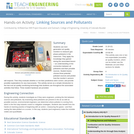
Students use next-generation air quality monitors to measure gas-phase pollutants in the classroom. They apply the knowledge they gained during the associated lesson—an understanding of the connection between air pollutants and their possible sources. Student teams choose three potential pollutant sources and predict how the monitor’s sensors will respond. Then they evaluate whether or not their predictions were correct, and provide possible explanations for any inaccuracies. This activity serves as a simple introduction to the low-cost air quality monitoring technology that students use throughout the associated activities that follow. Three student handouts are provided.

Do you ever dream of being able to fly? The good news is, you probably can! The bad news is that you can't fly very high or stay up for very long

Students observe and discuss a cup and pencil model of a cyclone to better understand the science behind how this pollutant recovery method functions in cleaning industrial air pollution.

This resource is a video abstract of a research paper created by Research Square on behalf of its authors. It provides a synopsis that's easy to understand, and can be used to introduce the topics it covers to students, researchers, and the general public. The video's transcript is also provided in full, with a portion provided below for preview:
"Built environments harbor a wide variety of microorganisms, and these microbial communities include both pathogens and strains carrying antibiotic resistance (AR) genes. One built environment that brings people together in our increasingly modern, urban world is public transit, so it's important to understand the relationships among the public transit environment, passengers, and microbes, including those in the air. Recently, researchers sequenced air microbiomes from public transit in 6 cities in North America, Europe, and Asia. City was the main factor associated with differences in public transit air microbiomes. Most AR genes came from human skin, soil, and wastewater and were found near mobile genetic elements including plasmids. Public transit air microbes were geographically specific, and the AR genes in public transit air came from passengers and the environment, including nearby surfaces..."
The rest of the transcript, along with a link to the research itself, is available on the resource itself.
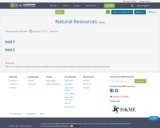
This is a creation on natural resources namely air. A very brief description on air and wind as natural resources.
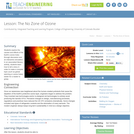
Students explore the causes and effects of the Earth's ozone holes through discussion and an interactive simulation. In an associated literacy activity, students learn how to tell a story in order to make a complex topic (such as global warming or ozone holes) easier for a reader to grasp.
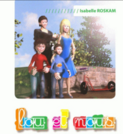
Lou is a young child presenting problem behaviors. At home, at school, or outdoors, Lou’s parents try different methods of correcting Lou’s behaviors, and evaluating their efficacy in the immediate, and longer, term.
The interactive program offers a rich simulation of situations parents and children in such circumstances might face. Whilst studiosly avoiding any suggestion of easily and universally applicable methods, the interactive program invites parents and professionals in training to reflect on the adequacy of their disciplinary and other child-rearing styles, and the impact of stress and fatigue on family functioning, related to environmental variables in their lives. The interactive program also proposes a series of « golden rules » parents and professionals in training can use as helpful guidelines and points of reference in promoting the welfare of their children and enhancing family functioning.
Use of the interactive program, which should always happen when their is professional supervision and accompaniment, by a parent, in a parental couple with or without the involvement of the child concerned, in a group of parents, or by a psychologist in training, contributes to improvement in child-rearing practices, the feeling of parental competence, co-parenting relationships, and communication with the child in question and other children who may be part of the family setting.
The interactive program’s playful and modern approach makes for an indispensable tool for psychologists and family educators working with young children with problem behavior, and their parents.
The interactive program may be used in four languages (English, French, German, and Spanish), and is accompanied by a manual in English and French describing the theoretical and empirical bases for the interactive program and its uses, as well as guidelines for using the video which are especially apt for professionals working in the educational guidance of parents and families.
Standard instructions regarding the training of students in the helping professions are also available on the interactive program. These instructions are aimed at professors in higher education in the domains of family psychology, family education, and cognitive-behavioral therapy. They permit psychologists and other professionals in training to understand how best to use the interactive program and focus its use in the broader context of their working relationships with one another and with families and children.
Lou est un jeune enfant présentant des difficultés de comportement. A la maison, à l’école ou en promenade, ses parents font des choix éducatifs et en évaluent l’efficacité immédiate et à long terme. Le programme interactif se présente comme un simulateur de situations éducatives. Sans jamais induire que l’éducation d’un enfant se réduirait à une recette universelle, il emmène parents et professionnels dans une réflexion à propos de l’adéquation des réponses éducatives en regard des comportements de l’enfant, de l’impact du stress et de la fatigue sur le fonctionnement familial, de l’importance des variables environnementales. Il propose un ensemble de « règles d’or » agissant comme des points de repère. Son utilisation par le psychologue en formation, le parent seul, en couple parental, avec ou sans leur(s) enfant(s), en groupe de parents, accompagné ou non d’un professionnel de la guidance, contribue par ailleurs à favoriser le travail thérapeutique portant sur la fonction parentale, la relation coparentale et la communication avec l’enfant. Son approche ludique en fait un outil indispensable aux psychologues et aux éducateurs familiaux travaillant auprès de jeunes enfants présentant des troubles du comportement et de leurs parents.
Le programme interactif est présenté en quatre langues (français, anglais, allemand et espagnol). Il est accompagné d’un manuel en français et en anglais donnant des indications sur ses fondements théoriques et des conseils d’utilisation à destination des professionnels de la guidance éducative.
Des consignes standardisées relatives à la formation des étudiants sont également disponibles . Elles sont destinées aux professeurs de l’enseignement supérieur et des universités dans les domaines de la psychologie de la famille, de l’éducation familiale et de la thérapie cognitivo-comportementale. Elles permettent d’orienter le travail des psychologues en formation à partir du programme interactif.
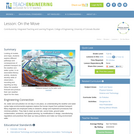
Looking at models and maps, students explore different pathways and consequences of pollutant transport via the weather and water cycles. In an associated literacy activity, students develop skills of observation, recording and reporting as they follow the weather forecast and produce their own weather report for the class.
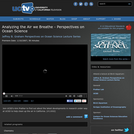
Join UCSD's Kim Prather to find out about the latest developments in research under way at UCSD to help clean up the air in California. (56 minutes)

Travel with Scripps marine biologist, Dr. Jeffrey Graham, to swamps, jungles, and isolated islands where he probes the world of air breathing fishes and asks the question, why breathe air? (53 minutes)
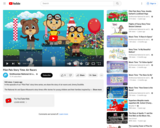
In this episode of our "Pilot Pals" story time series, we share the story of air racers and Jimmy Doolittle.

In this episode of our "Pilot Pals" story time series, we share the story of the Piper J - 2 Cub, which many pilots have used to learn to fly.
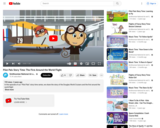
In this episode of our "Pilot Pals" story time series, we share the story of the Douglas World Cruisers and the first around the world flight

To gain a better understanding of the roles and functions of components of the human respiratory system and our need for clean air, students construct model lungs that include a diaphragm and chest cavity. They see how air moving in and out of the lungs coincides with diaphragm movement. Then student teams design and build a prototype face mask pollution filter. They use their model lungs to evaluate their prototypes to design requirements.
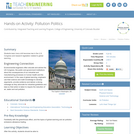
Students learn how a bill becomes law in the U.S. Congress and research legislation related to global warming.
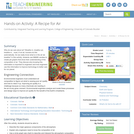
Why do we care about air? Breathe in, breathe out, breathe in... most, if not all, humans do this automatically. Do we really know what is in the air we breathe? In this activity, students use M&M(TM) candies to create pie graphs that show their understanding of the composition of air. They discuss why knowing this information is important to engineers and how engineers use this information to improve technology to better care for our planet.

to enable students to explore the air element using the stem and 5 E plan to guide them to create new products with engineering
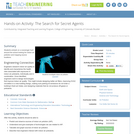
Students embark on a scavenger hunt around the school looking for indoor air pollution and mapping source locations.
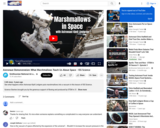
See what happens when Astronaut Kjell Lindgren puts marshmallows into a vacuum in this lesson of ISS Science.